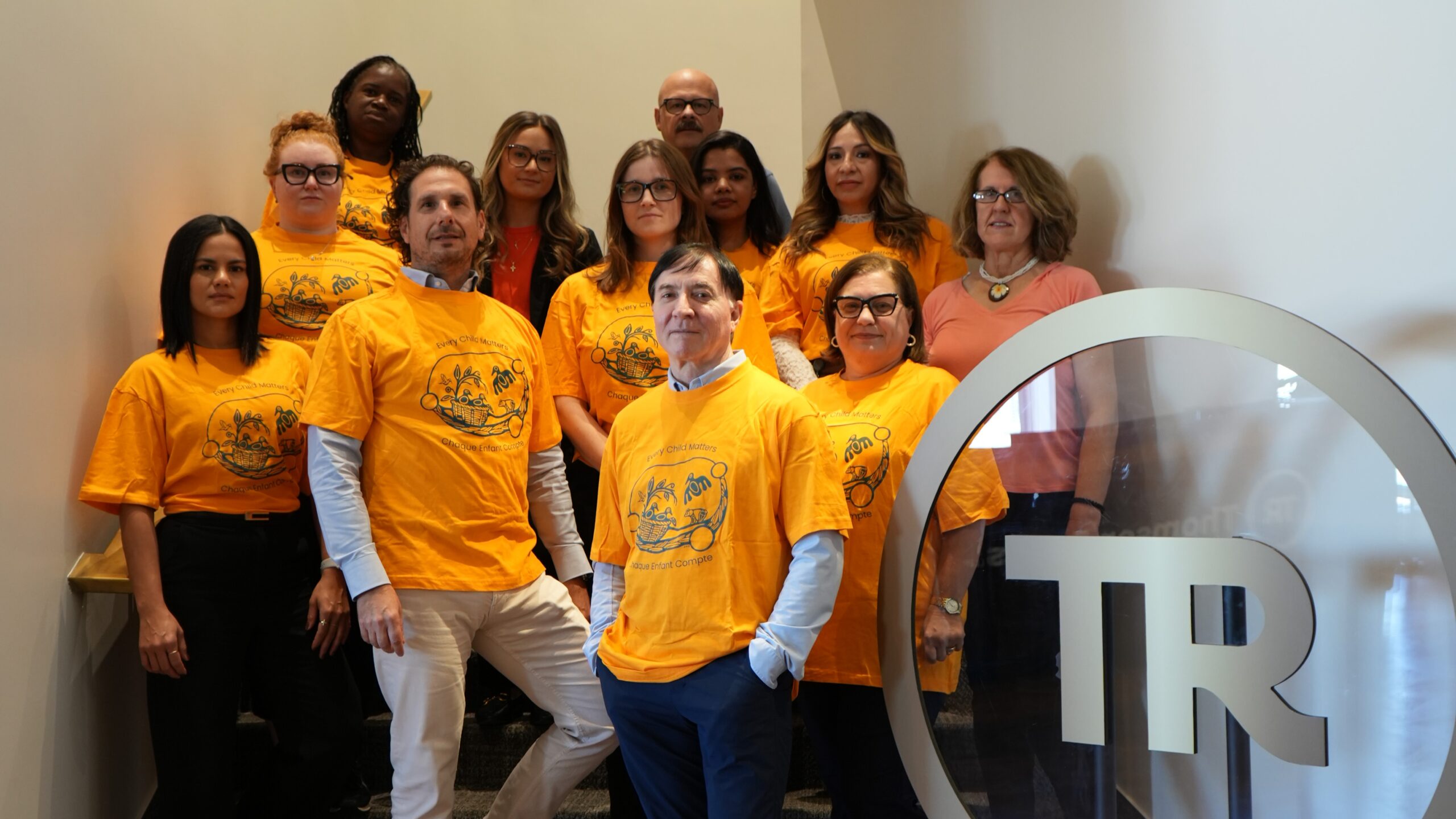National Day for Truth and Reconciliation
September 30, 2025

September 30th is National Day for Truth and Reconciliation. It is a day to honour the children who never returned home from residential schools, Survivors who continue to live with the impact, and the families and communities forever changed.
It is also Orange Shirt Day, an Indigenous-led day of remembrance and awareness, recognizing the intergenerational harms caused by the residential school system.
The largest and most nationally significant case in Thomson Rogers’ history is our work advocating for compensation for survivors of residential schools — a landmark effort that helped shape justice and healing across Canada.
Legal Support for Survivors
As we mark the National Day for Truth and Reconciliation, we reflect on our history tied to the Indian Residential Schools Settlement Agreement (“IRSSA”). On May 10, 2006, the Government of Canada announced the approval of the IRSSA, following negotiations in which our firm was deeply involved, along with others. Final court approval came in March 2007, and the IRSSA took effect on September 19, 2007.
The IRSSA represents the largest class action settlement in Canadian history, valued at over $4 billion. Thomson Rogers was the first to issue a national class action on behalf of Residential School Survivors across Canada. Our lawyers—Craig Brown, Alan Farrer, and Darcy Merkur—were part of every stage of this process, including the negotiations that led to this historic settlement. The Ontario Superior Court of Justice approved the settlement, citing extensively from the Affidavit of Darcy Merkur in its decision.
How the Case Began
The national class action started with a case known as Baxter v. Canada. The claim was brought on behalf of two brothers from Northern Ontario who had attended residential schools. At the time, individual lawsuits were being advanced across the country, but there was growing recognition that a class proceeding could better address the widespread and common harms faced by Survivors.
Unlike individual cases, which often focused on physical and sexual abuse, the class action also sought recognition for the shared loss of language, culture, and identity experienced by all students who attended residential schools. That broader claim was critical to reflecting the true scope of the harm.
Forming a national class action required bringing together dozens of parties and stakeholders, including Survivors, lawyers, and national organizations such as the Assembly of First Nations. To move forward, it became clear that a collective approach was necessary—not just legally, but also politically. Time was pressing. Survivors were aging, and many were passing away without seeing resolution.
Building a National Consortium
After extensive discussions, a national consortium of 19 law firms (of which we were one) was created to advance the action together. While often referred to in court as Fontaine v. Canada, the case began as Baxter v. Canada—the national class action initiated by Thomson Rogers LLP.
The negotiations spanned the country, and involved complex and difficult discussions with multiple governments, churches, and institutions. Our lawyers played an instrumental role in those negotiations, the drafting of the agreement, and ultimately the administration of the settlement.
A Landmark Settlement
The result was a settlement valued at nearly $5 billion, making it the largest in Canadian history. The agreement provided compensation to everyone who attended a residential school, as well as a process for addressing physical and sexual abuse claims. Thousands of Survivors across Canada received recognition and compensation through this process.
Beyond its financial scope, the settlement carried enormous political and social significance. It represented a critical step forward in the relationship between Indigenous Peoples and Canada, and it highlighted the importance of accountability, recognition, and reconciliation.
To this day, the case remains a defining moment in our firm’s history, and one that is inseparable from the broader story of Canada’s journey toward truth and reconciliation. It is a reminder of the ongoing responsibility to learn, reflect, and act in support of Survivors, their families, and their communities.
Share this




